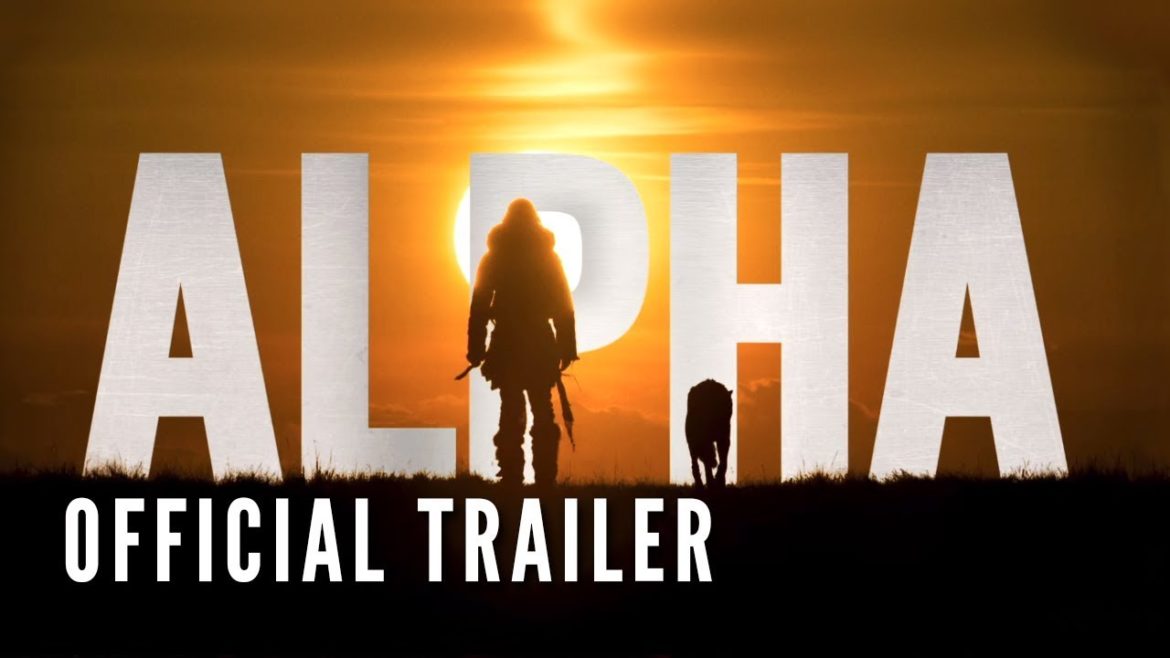TL;DR
Alpha, a prehistoric survival film, tells the story of Keda, a young hunter left for dead who bonds with a wolf. Unfortunately, the film suffers from a lack of clear identity, veering between family adventure and gritty drama, and is let down by questionable historical accuracy, jarring CGI, and an invented language that hinders emotional impact. Despite a potentially compelling premise, Alpha feels like a compromised vision, ultimately failing to deliver a convincing or engaging experience. Dive into the full review to see why this one might be best left in the Stone Age.
It’s a concerning sign when a film is released a year after its initially scheduled premiere. Alpha, originally titled The Solutrean, was intended for a September 2017 release. The reasons for the delay are somewhat unclear, but one factor was the controversy surrounding the reported slaughter and skinning of five bison for the film. PETA announced a boycott in response. It is hoped that these reports are unfounded, as using real bison in a production heavily reliant on blue screen technology seems unnecessary. More on this point will follow.
The film is set 20,000 years ago and follows a tribe of hunters embarking on a long expedition to hunt bison. Tau (Jóhannes Haukur Johannesson) brings his son, Keda (Kodi Smit-McPhee), along for his first such journey. En route, they encounter another tribe, led by Xi (Jens Hultén), who join their party. During the hunt, Keda is injured and falls from a high cliff, landing on a ledge inaccessible to the others. Believing him to be dead, they leave him behind and return to their cave. Keda, however, is alive. He awakens, disoriented and injured, and begins his descent from the mountain and the long trek home. On his journey, he is attacked by a pack of wolves. He wounds one of the wolves and manages to escape the rest. Instead of killing the injured animal, he decides to care for it, an act that marks the beginning of a significant turning point for humanity.
Unfortunately, Alpha presents several issues. A primary concern is the film’s lack of a clear identity. Is it aiming to be a family-friendly adventure akin to a Disney production, or a gritty survival drama in the vein of The Revenant? Does it aspire to showcase stunning natural landscapes, or is it content with relying on subpar computer-generated effects? Does it offer suspense or, more often, tedium?
The following section contains spoilers. Reader discretion is advised.
The characters are presented as representations of human life 20,000 years ago. The filmmakers created a fictional language for the characters, eliminating the use of English. However, this approach becomes problematic, particularly in extended dialogue sequences where the invented language sounds nonsensical. Furthermore, elements such as the clothing and advanced hoods appear anachronistic, lending an overly modern feel to the production. While not an expert in this specific era, these details feel jarring. The hunting sequence, where the tribe conveniently finds a herd of bison perfectly positioned near a cliff for an easy kill, lacks believability. There is no explanation for how the hunters herded the animals into this precise location or how they managed to drive them over the edge. Similarly, Keda’s fall onto a conveniently placed ledge, just far enough to survive but too far for rescue, strains credulity. The tribe’s apparent inability to fashion a simple rope to attempt a rescue is illogical, given the presence of suitable materials in their clothing.
Keda’s subsequent descent from the mountain is equally implausible. He begins to climb down but reaches a point where he can proceed no further. Suddenly, an intense downpour occurs, causing the valley to flood and allowing Keda to fall into the water and survive. One might expect that a tidal wave powerful enough to allow a man to survive such a fall would carry him far downstream. However, he awakens among the dead bison at the foot of the mountain. A more logical explanation would have been a flash flood in a dry riverbed, but the screenwriters opted for a less sophisticated approach. Not since viewing the disappointing Downsizing has a film’s logical inconsistencies been so distracting.
Injured, Keda begins his journey home and encounters the wolf, initiating their shared journey. The distance Keda must travel remains unclear. The film suggests a journey lasting several months. This raises questions about the tribe’s extended hunting trip. Did they already know the location of the bison herd? If so, why didn’t they establish a camp closer to their prey? It is generally understood that humans at this time were nomadic, lacking permanent settlements.
The film’s visual presentation is also underwhelming. The digital effects are glaring, and the transitions are jarring and ill-suited to the overall tone. The extensive use of blue screen detracts from the potential impact of the natural landscapes. Furthermore, Keda’s digitally rendered loincloth suggests a shift from an R-rating to a PG-13 rating during the film’s delayed production.
The acting performances are difficult to assess definitively, given the film’s aforementioned inconsistencies. The artificial language undermines potentially emotional scenes, rendering them unintentionally comical. The actors, including the Australian, the Icelander, and the Swede, deliver passable performances, but nothing more. Albert Hughes, previously known for co-directing Book of Eli with his brother, directs this film solo. It is unclear whether this was a passion project gone awry, but the final product feels like a compromised vision, a film with grander ambitions that was ultimately mutilated and reduced to a pale imitation of its original intent.
By the time the poorly rendered computer-animated wolf pups appeared near the film’s conclusion, engagement had waned completely. In summary, this film is not recommended.
